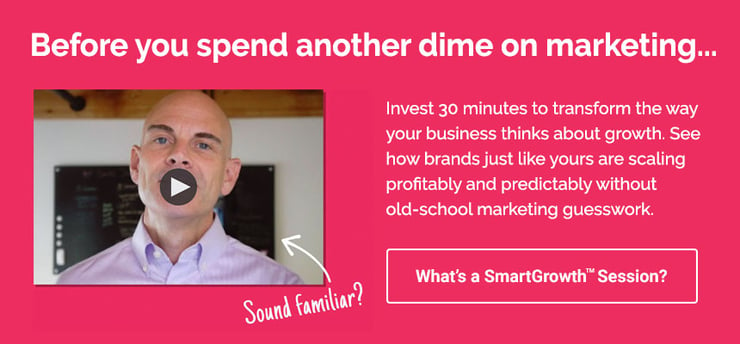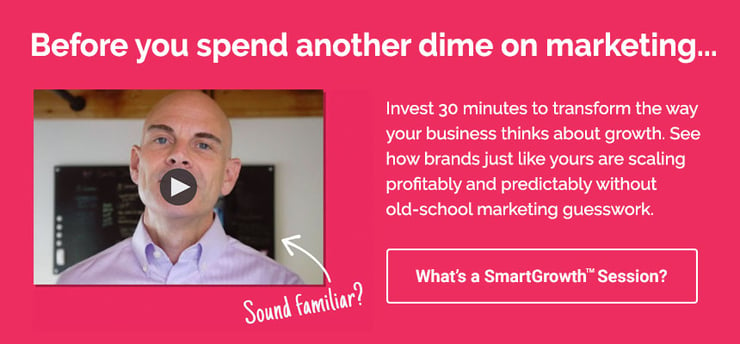We see it all the time. B2B founders slapping together marketing tactics ad hoc and at random just to be doing SOMETHING.
The problem is—without a solid B2B marketing strategy framework-–these efforts are little more than a colossal waste of time and money.
If this is you, it’s time to hit the pause button and start over with a proven framework that delivers results. A framework that simplifies and streamlines your approach, aligning every effort towards a singular goal: predictable and profitable growth.
Introducing the 4P B2B Marketing Strategy Framework. A thoughtful, customer-centric approach for aligning marketing with go-to-market strategy. Master the 4Ps of Positioning, Pipeline, Process, and Performance, and you'll transform your marketing from ad-hoc chaos to a well-oiled machine.
The 4 Ps: A Foolproof B2B Marketing Strategy Framework
Positioning
Modern B2B marketing isn’t about promoting your product. It’s about helping buyers do 3 things:
- Understand the problem they need to solve.
- Navigate their options.
- Choose the right solution.
Step 1: Understand your Audience
To truly connect with your audience and create a marketing strategy that resonates on a deep level, it's imperative to start by understanding their unique pain points, potential objections, and current position in the buyer's journey. Engage in comprehensive customer interviews to uncover not only the challenges they face but also the solutions they desire. Utilize market research to gather data and insights that reveal broader industry trends and customer needs. Tools like SparkToro can provide a wealth of information about where your B2B target audience spends their time online and the topics that interest them the most. This approach ensures your marketing efforts are not only heard but felt, leading to more meaningful engagements and, ultimately, conversions. By fully comprehending where they stand and what hurdles they encounter, you can tailor your messaging to speak directly to their condition, guiding them seamlessly through their purchase decision process.
Step 2: Understand your Competitors
Understanding the competition requires a meticulous examination of the competitive landscape, identifying not only the direct competitors but also acknowledging that alternative solutions — even the option of doing nothing — represent a form of competition. This requires conducting a thorough competitive analysis, where you scrutinize competitors' marketing strategies, messaging, product offerings, and market positioning. Utilize platforms like SEMrush for capturing authority scores and backlink analysis, and dive into your main competitors' websites to glean what offers and CTAs they use to capture attention.
Remember, your prospects' choice to ignore their problem or choose an alternate solution is as much a competitor as any business in your field. This broad perspective allows for a comprehensive competitive strategy, ensuring your B2B brand messaging not only differentiates you from other players in the market but also addresses the inertia of potential customers stuck in the status quo. Recognizing and strategizing against the full spectrum of competition empowers your brand to stand out and persuasively communicate what makes your solution different.
Step 3: Dive into the Founder’s Story
Diving into the founder's story is a powerful way to enrich your positioning statement, adding a layer of authenticity and purpose that resonates deeply with your audience. Begin by exploring the genesis of your company - what was the initial spark that ignited the venture? Understand the challenges and obstacles the founders faced on their journey and how they overcame them. Delve into the core problem they aimed to solve and why it was meaningful enough to pursue. Asking these questions helps you craft a compelling narrative and positions your brand as one built on genuine solutions to real problems. This approach does not just humanize your brand; it creates a foundational story that differentiates you in the marketplace, making your solutions inherently more relatable and your brand more trustworthy to your target audience.
Step 4: Describe your Ultimate Advantage
What truly sets your solution apart from the sea of competitors out there? Have you identified your secret sauce? The essence that is unmistakably you? This isn't just about being different for the sake of novelty; it's about uncovering the bedrock of your offering that solves your customer's problems in a way no one else can. Embark on a deep, rigorous examination of your product or service. What features, benefits, or experiences do you provide that others don't? More importantly, why should your customers care? This is your chance to stand in the limelight and clarify your unique value proposition.
Pipeline
Pipeline refers to how you align your marketing efforts with the customer acquisition process, aka buyer journey. The best approach is to visualize the process by creating a customer acquisition map so that sales and marketing teams can all see how their independent and collective efforts impact customer acquisition. The key landmarks that should be included are:
Cold, Warm & Hot Website Pages
These are the foundation of a customer-centric B2B website. Cold pages introduce your brand, warm pages demonstrate value and hot pages are geared towards conversion—a crucial part of any B2B marketing strategy framework.
Marketing Channels
These channels, including social media, paid search, blogs, and email newsletters, are vital arteries in the B2B marketing strategy framework, directing traffic towards your site.
Nurture Elements
Nurture elements like email drips, social media, blogs, and webinars keep potential customers engaged, gradually warming them up to your offer.
Primary Offer
Whether booking a meeting or scheduling a demo, the primary offer is the actionable step that propels potential clients into the sales funnel, pivotal in any B2B marketing strategy framework.
Sales Process
Documenting the steps from the initial call to closing the deal ensures a smooth transition through the sales funnel, an essential component of the B2B marketing strategy framework.
Lifecycle Stages
Defining lifecycle stages (lead, MQL, SQL, etc.) and their criteria ensures a clear progression of prospects, optimizing the effectiveness of your B2B marketing strategy framework.
Process
B2B marketing requires an omnichannel, content-heavy approach. How will you produce quality content consistently? Good content starts with planning. From case studies to industry research to interviews with thought leaders... the quality of the planning that goes into a piece of content will translate into the value your audience receives. Well-planned content establishes authority. It becomes easier to find. Easier to share. And easier to repurpose.
Essential Components:
- Content Planning: The blueprint of your marketing strategy, content planning ensures every piece of content serves a strategic purpose, reaching the right audience at the right time on the right platform, thereby amplifying your marketing efforts across channels.
- Blog Articles: Blogs are the backbone of your content marketing strategy, driving SEO, establishing thought leadership, and providing ample material for repurposing into snippets, social media posts, and email content, making your brand omnipresent across platforms.
- Video: With its high engagement rate, video content breaks down complex information into digestible pieces, enhancing your brand's reach on social media, websites, and emails while fostering a stronger connection with your audience.
- Social Media: Social media marketing provides daily engagement with your audience, increasing brand visibility and allowing for real-time feedback and interaction, which is critical in an omnichannel strategy.
- Email: The direct line to your audience, email marketing personalizes the relationship with your subscribers by delivering targeted content, updates, and offers, driving conversions through a more intimate channel.
- Resources: By offering high-value downloadable resources like guides, webinars, or courses, your brand not only differentiates itself but also builds a repository of information that can attract leads and nurture them along the buyer's journey.
Performance
Track key metrics to measure your performance across the customer acquisition pipeline. This informs you where there might be friction so you can optimize and improve your marketing strategy.
6 Growth Metrics
- Awareness: Measure brand recognition and understand potential clients through metrics like website traffic, social media reach, and search rankings.
- Acquisition: Track the conversion of aware prospects into engaged leads via actions like clicking on lead magnets or interacting with content.
- Activation: Analyze metrics like lead scores, conversion rates, and customer acquisition costs to gauge the efficiency of converting engaged leads into paying customers.
- Revenue: Evaluate key financial metrics like customer lifetime value, recurring revenue, and sales-qualified lead conversion rates to assess marketing performance.
- Retention: Monitor customer retention rates, repeat purchase ratios, and net promoter scores to maintain long-lasting relationships with existing customers.
- Referral: Leverage existing customers to drive new business through metrics like referral rates, customer referral values, and referral lead conversion rates.
If you’re tired of wasting time and money on marketing guesswork, the 4P B2B marketing strategy framework provides a roadmap to a more cohesive and coherent approach to marketing. In taking the time to think through and understand positioning, pipeline, process, and performance your marketing efforts will be more meaningful to your audience, and more effective overall. With this 4P framework, you'll be equipped to simplify your marketing, streamline your efforts, and ultimately, drive sustainable growth for your B2B business.
At Brand Theory, we help growth-stage brands scale profitably and predictably by leaning on the 4Ps – leveraging comprehensive growth and content marketing strategies with website design and paid search campaigns. This omnichannel approach helps reach audiences across channels and at every stage of the buyer's journey. Curious? Book a no-obligation introduction to Brand Theory today.






.png)
.png)
.png)